Lao huai cheng Monopterus albus noodles (xin huai branch)
4.0/5
18 Reviews
No. 5 of Must-Visit Restaurants in Huai'an
Highlights: An authentic local specialty snack dating back to the Qianlong era of the Qing Dynasty
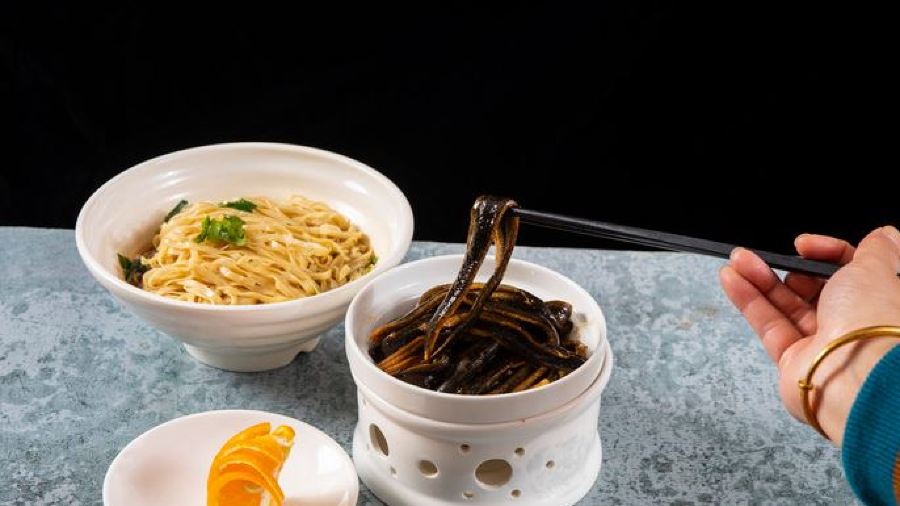
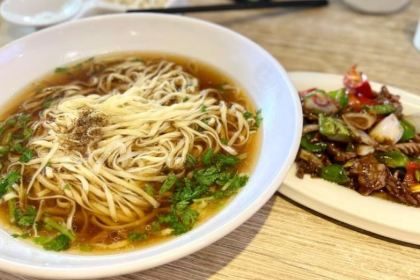
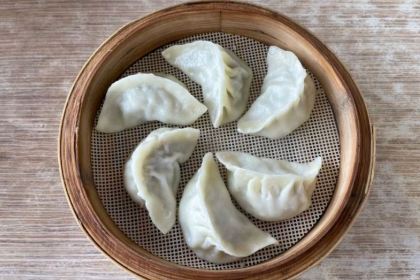

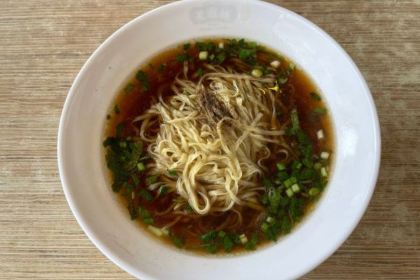
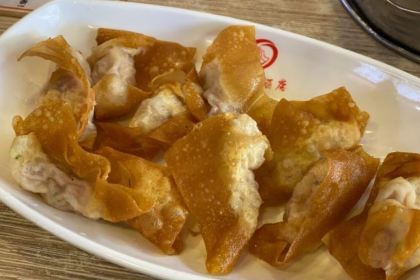
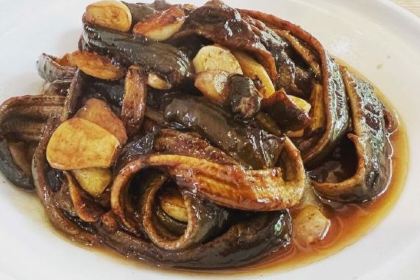
More
Currently closed|Open at 16:30 todayShow more
+8651785912550
No.60-9 Nanmen Street, next to Chuzhou Hotel, (400 meters south of Zhenhuai Building).
 身份都是自己给的A restaurant recommended by locals. I ordered noodles and steamed buns. They were very unique and I was quite satisfied with the food.
身份都是自己给的A restaurant recommended by locals. I ordered noodles and steamed buns. They were very unique and I was quite satisfied with the food.Reviews of Lao huai cheng Monopterus albus noodles (xin huai branch)
Some reviews may have been translated by Google Translate
4/5Excellent
All (18)
Latest
Photo reviews (15)
Positive reviews (2)
Negative reviews (1)
A restaurant recommended by locals. I ordered noodles and steamed buns. They were very unique and I was quite satisfied with the food.
A local noodle restaurant highly recommended online, and also highly recommended by locals. I had too high expectations, but it felt average... It's an old chain store, with many stores, so I came to try it when I passed by. I still order at the front desk, and someone will deliver it to my seat after I buy it. There are many people, and they all share tables to eat, so there is no environment to speak of. The special soft-shell noodles, the form is more important than the content, the so-called three-way meal, first a bowl of ordinary green tea, then noodles and soft-shell. The noodles are not handmade noodles, and ordinary clear soup noodles are not as delicious as Suzhou noodles. The soft-shell is the spine of the eel, and there are not many in a small portion. It mainly relies on the side dish onion to support the plate. It is fried very oily, the color is beautiful, and the taste is very ordinary. There is a lot of pepper, and the fresh fragrance of the long eel cannot be tasted. The kidney flower I ordered is also cooked in the same way, but fortunately it is not smelly, so it is still okay. I also ordered the local crab roe soup dumplings, but this one is not bad, and it is worth the price. Although there is not much crab roe, the soup is still very delicious, and the skin is thin. After trying it, only this recommendation is edible. There is no need to come here specially, it is better to go to his small shop at the street corner. The toppings in each shop are also freshly fried, and they all have a wok flavor.
This is a long-established noodle shop. The soft-serve fish noodles are quite famous. Before eating, they will serve a cup of tea to cleanse the mouth, which is quite a ritual.
🍜 【Budget Reference】 ✅ Weekend Trip for a Family of Three: 500-800 RMB (excluding high-speed rail tickets) ✅ Attraction Entrance Fees: 50 RMB per person (Free for children under 1.2m!) ✅ Accommodation: Family-friendly B&B 100-150 RMB/night ✅ Dining: Snacks + Main Meals 40 RMB per person/day 🏞️ 【Must-Visit Attractions】 1️⃣ Zhou Enlai Memorial Hall ✨ Free Admission! A large garden perfect for families with children, offering a rich red education experience. 📌 Tips: Strollers are available for rent at the entrance; the memorial hall has a multimedia interactive area. 2️⃣ Liyun River Cultural Corridor ✨ A must-visit in the evening! Beautiful lights, enjoy a night cruise on a painted boat (30 yuan/person) 📌 Tip: Lights turn on after 6:30 PM, and there's a Huai opera performance on board. 3️⃣ Huai'an Westward Journey Park ✨ A local "Disneyland"! Family package ticket 99 yuan (includes 5 attractions) 📌 Tip: There's a parade at 2:00 PM, and the Monkey King mascot will hand out candy. 4️⃣ Hexia Ancient Town ✨ Free ancient town! Stroller walking is effortless on the cobblestone streets; check out Wu Cheng'en's former residence! 📌 Tip: Experience making intangible cultural heritage tea cakes at the ancient town's tea shops. 🗺️ 【Two-Day Itinerary】 Day 1: Arrive by high-speed rail → Zhou Enlai Memorial Hall → Canal Night Cruise 💡 Recommended accommodation: Qingjiangpu District, only a 5-minute walk to the canal. Day 2: Hexia Ancient Town → Journey to the West Theme Park → Return Trip 💡 Taxi fare from the ancient town to the theme park is 15 yuan. Remember to bring Hanfu (traditional Han clothing) for photos with your kids! 🍢 【Food Recommendations】 1️⃣ Soft-shelled Eel Noodles 🐟 A must-try! The boneless eel is incredibly tender, even kids can enjoy it. 📍 Recommendation: Lao Huai Cheng Eel Noodles (average 25 yuan per person) 2️⃣ Pingqiao Tofu 🤤 Tofu and chicken broth, so delicious you'll want to lick the bowl clean! 📍 Recommendations: You can't go wrong with any of the shops in the ancient town 3️⃣ Tea-fried Fried Dough Sticks 🍯 Crispy snacks, made on-site – kids love watching! 📍 Recommendation: Cheng Gongshun Tea-fried Fried Dough Sticks Shop in Hexia Ancient Town 4️⃣ Wenlou Soup Dumplings 🥟 Drink the soup with a straw first! Be careful, it's hot! 📍 Tip: Go before 10 AM to avoid the queue 💡 Mom's Tips 👉 Take the high-speed rail to "Huai'an East Station," a taxi to the city center costs 20 yuan. 👉 You can bring food to the Xiyou Amusement Park; it's recommended to bring some snacks for your kids. 👉 Rent a cheongsam for 10 yuan in Hexia Ancient Town – perfect for mother-daughter photos! Huai'an is truly a great place for a leisurely stroll with your kids! Low prices and fun activities! My kid is still talking about Sun Wukong even after we got home! Huai'an Family Trip #HighSpeedRailTrip #LowBudgetKidsTrip #JiangsuZhejiangShanghaiSurroundingTrip
Exploring Huai'an: Savoring the Tranquility of the Canal Capital Amidst Culinary Delights and Historical Sites When Huai'an is mentioned, the question often arises: "Huai'an? Where is that?" It doesn't possess the opulent grandeur of Nanjing's Six Dynasties era, nor the elegant charm of Suzhou's gardens and ink paintings. It's like a simply bound ancient book, requiring you to quiet your mind, brush away the dust of the world, to truly appreciate the hidden beauty beneath its watery depths. A Bowl of Noodles and an Initial Encounter with the City I knew of Huai'an because of its title as a "World City of Gastronomy," and even more so because it's the birthplace of Huaiyang cuisine. Driving there, my first impression was the city's unhurried pace. The old town was faded, with elderly people chatting under the eaves, their eyes reflecting the peaceful flow of the canal. The new town was spacious and bright, especially the green space in front of the government building, showcasing meticulous modern planning. But the real Huai'an is hidden in the vibrant atmosphere rising from the depths of its streets and alleys. My first stop in this culinary adventure was a bowl of long fish noodles, a traditional Huai'an specialty. In Huaiyang cuisine, eel is called "long fish," an ingredient that tests a chef's skill. The noodles lie smoothly in the rich, white broth, the eel pieces tender yet slightly chewy. The broth is the essence, rich and flavorful without overpowering the original taste of the ingredients. If you prefer a chewy texture, you can order "pulled noodles"; if you prefer a softer texture, the soup noodles are best. One bite, and your taste buds are conquered by this simple yet exquisite culinary experience. Later, I tried the shepherd's purse wontons, the fresh aroma of wild vegetables blooming on my palate; the cattail steamed dumplings were even more amazing, the crisp and tender "Huai bamboo shoots," with their fresh aquatic flavor, a seasonal taste hard to find elsewhere. Of course, there were also some mishaps on the culinary journey. The renowned Wenlou crab roe soup dumplings, though rich in broth when sipped through a straw, felt somewhat lacking in substantial satisfaction; the Wensi tofu, though finely cut, had a slightly bland flavor. This perfectly captures the essence of travel—only by experiencing it firsthand can one truly know what is cherished and what is fleeting. The Echoes of a River and Three Books Upon arriving in Huai'an, I learned that the ink fragrance of three of China's Four Great Classical Novels is intertwined with this land. *Water Margin* was written by Shi Nai'an during the late Yuan and early Ming dynasties while he was seeking refuge here; his disciple Luo Guanzhong, by his side, conceived the grand scheme of *Romance of the Three Kingdoms* on the banks of the Grand Canal; and Wu Cheng'en, the author of *Journey to the West*, was a native of Huai'an. In an instant, the heroism of the Liangshan heroes, the strategies of the Three Kingdoms' heroes, and the fantastical elements of *Journey to the West* seemed to subtly flow in the air of this city. This cannot be simply summarized as "deeply culturally rich"; it is truly a "blessed land" of classical Chinese literature. I visited the ancient town of Hexia. Originally a salt wharf, it now boasts numerous shops lining the streets, exuding a certain commercial atmosphere. But when you step onto the stone-paved road laid during the Kangxi era, listening to the echoes beneath your feet, history awakens. Look at the former fire-fighting waterworks, gaze up at the Zhuangyuan Tower symbolizing flourishing literary talent, and imagine the figure of a great master of febrile diseases in Wu Tang's medical clinic… Strolling through it, you're not buying commodities, but a moment to converse with the past. A Prefectural Government Office: Experiencing a Thousand Years of Official Authority The most impressive place on this trip was the Huai'an Prefectural Government Office. Unlike many newly restored tourist attractions, it possesses a solemn, even slightly oppressive, sense of authenticity. As the largest existing ancient government office complex in the country, it's like a three-dimensional textbook of officialdom. From the "Public Service Brings Clarity" archway in the main hall, to the meticulous trials in the second hall, and then to the living quarters in the rear residence, the layout is astonishingly complete. Wandering through the deep corridors, seeing the cold instruments of torture, the imposing main hall contrasts sharply with the elegance of the rear garden. Ahead lies a living hell, behind lies a living paradise. Seeing the execution platform abolished by Emperor Yongzheng, then the reconstructed Pichang Temple (where Zhu Yuanzhang punished corrupt officials by skinning them alive), and all those various instruments of torture, I couldn't help but feel terrified. At that moment, I understood why there was the injustice of Dou E, who was forced to confess under torture; the mortal body truly couldn't withstand such torment. Walking through the government office, I could almost see countless clerks rushing about, hear the echo of the gavel and the cries of the people. It silently tells a story of power, order, and human relationships, more directly and powerfully than any book. Huai'an, a city that needs to be slowed down. Its charm lies not in skyscrapers, but in the quiet narrative of a bowl of noodles, a book, an ancient street, and an old government office.